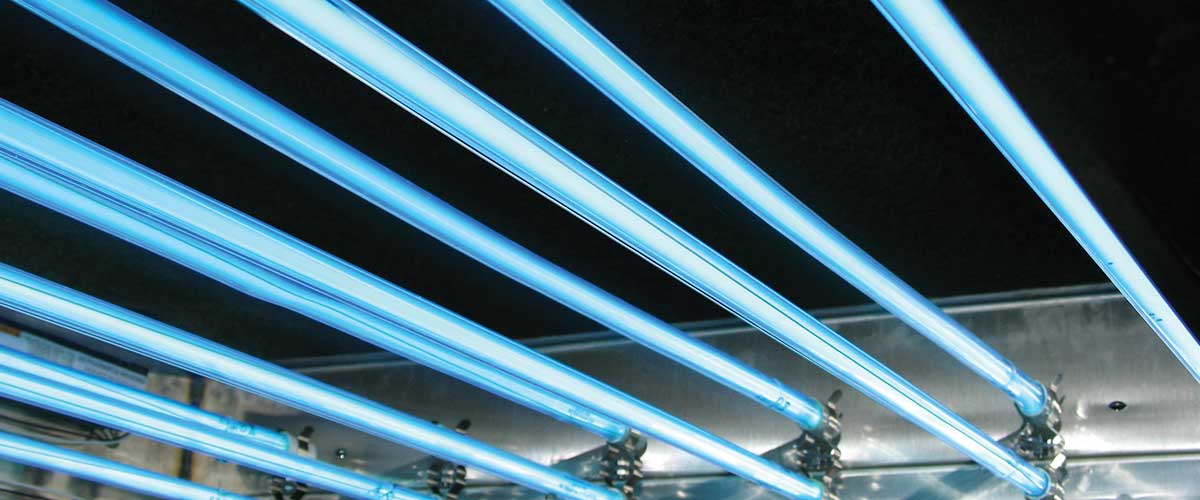The Chart
Below is a table that shows a range of microbes and their relevant kill factors. The table shows the incident energies of germicidal ultraviolet radiation at 253.7 nanometers (UVC) necessary to inhibit colony formation in organisms (90%) and for 3-Log (99.9%) reduction.
It is important to keep in mind that when operating any UVC equipment that more exposure/energy is better. In the case of the GreenZapr/miniZapr equipment, a more significant level of exposure is achieved in fractions of seconds. One should not get focused too precisely on any specific number. A more careful, deliberate approach to UVC equipment operation will result in greater certainty that any risk of infection by microbes has been reduced significantly.
For an analysis of the GreenZapr/miniZapr energy output, click here.
Energy needed for kill factor Microwatt seconds per square centimeter - Organism
| 90% Kill Factor | 99% Kill Factor | ||||||
|---|---|---|---|---|---|---|---|
| Bacillus anthracis | 4,520 | 8,700 | |||||
| Bacillus magaterium sp. (spores) | 2,730 | 5,200 | |||||
| Bacillus magaterium sp. (veg.) | 1,300 | 2,500 | |||||
| Bacillus paratyphusus | 3,200 | 6,100 | |||||
| Bacillus subtilis spores | 11,600 | 22,000 | |||||
| Bacillus subtilis | 5,800 | 11,000 | |||||
| Clostridium tetani | 13,000 | 22,000 | |||||
| Corynebacterium diphtheriae | 3,370 | 6,500 | |||||
| Eberthella typosa | 2,140 | 4,100 | |||||
| Escherichia coli | 3,000 | 6,600 | |||||
| Leptospira Canicoal-infeetions Jaundice | 3,150 | 6,000 | |||||
| Micrococcus candidus | 6,050 | 12,300 | |||||
| Micrococcus spheroides | 1,000 | 15,400 | |||||
| Mycobacterium tuberculosis | 6,200 | 10,000 | |||||
| Neisseria catarrhalis | 4,400 | 8,500 | |||||
| Phtomonas tumeficiens | 4,400 | 10,000 | |||||
| Proteus vulgaris | 3,000 | 6,600 | |||||
| Pseudomonas aeruginosa | 5,500 | 10,500 | |||||
| Pseudomonas fluorescens | 3,500 | 6,600 | |||||
| Salmonella enteritidis | 4,000 | 7,600 | |||||
| Salmonella paratyphi-enteic fever | 3,200 | 6,100 | |||||
| Salmonella typhosa-typhoid fever | 2,150 | 4,100 | |||||
| Salmonella typhimurium | 8,000 | 15,200 | |||||
| Sarcina lutea | 4,200 | 19,700 | |||||
| Serratia marcescens | 2,420 | 3,400 | |||||
| Shigella dysenteriae-Dyentery | 2,200 | 4,200 | |||||
| Shigella flexneri-Dysentary | 1,700 | 3,400 | |||||
| Shigella paradysenteriae | 1,680 | 3,400 | |||||
| Spirillum rubrum | 4,400 | 6,160 | |||||
| Staphylococcus albus | 1,840 | 5,720 | |||||
| Staphylococcus aureus (MRSA) | 2,600 | 6,600 | |||||
| Streptococcus hemolyticus | 2,160 | 5,500 | |||||
| Streptococcus lactis | 6,150 | 8,800 | |||||
| Streptococcus viridans | 2,000 | 3,800 | |||||
| Vibrio comma-Cholera | 3,375 | 6,500 |
Energy needed for kill factor Microwatt seconds per square centimeter - Protozoa
| 90% Kill Factor | 99% Kill Factor | ||||||
|---|---|---|---|---|---|---|---|
| Chiarella vulgaris (Algae) | 13,000 | 22,000 | |||||
| Nematode eggs | 4,000 | 92,000 | |||||
| Paramecium | 11,000 | 22,000 |
Energy needed for kill factor Microwatt seconds per square centimeter -Virus
| 90% Kill Factor | 99% Kill Factor | ||||||
|---|---|---|---|---|---|---|---|
| Bacteriophage (E. coli) | 2,600 | 6,600 | |||||
| Infectious Hepatitis | 5,800 | 8,000 | |||||
| Influenza | 3,400 | 6,600 | |||||
| Poliovirus-Poliomyelitis | 3,150 | 6,000 | |||||
| Tobacco mosaic | 240,000 | 440,000 |
Energy needed for kill factor Microwatt seconds per square centimeter -Yeast
| 90% Kill Factor | 99% Kill Factor | ||||||
|---|---|---|---|---|---|---|---|
| Brewer’s yeast | 3,300 | 6,600 | |||||
| Common yeast cake | 6,000 | 13,200 | |||||
| Saccharomyces carevisiae | 6,000 | 13,200 | |||||
| Saccharomyces ellipsoideus | 6,000 | 13,200 | |||||
| Saccharomyces sp. | 8,000 | 17,600 |
Energy needed for kill factor Microwatt seconds per square centimeter - Mold Spores (Color)
| 90% Kill Factor | 99% Kill Factor | ||||||
|---|---|---|---|---|---|---|---|
| Aspergillus flavis (Yellowish green) | 66,000 | 90,000 | |||||
| Aspergillus glaucus (Bluish green) | 44,000 | 88,000 | |||||
| Aspergillus niger (Black) | 132,000 | 330,000 | |||||
| Mucor racemosus A (White gray) | 17,000 | 352,000 | |||||
| Mucor racemosus B (White gray) | 17,000 | 352,000 | |||||
| Oospora lactis (White) | 5,000 | 11,000 | |||||
| Penicillium expansum (Olive) | 3,000 | 22,000 | |||||
| Penicillium roqueforti (Green) | 13,000 | 26,400 | |||||
| Penicillium digitatum (Olive) | 44,000 | 88,000 | |||||
| Rhisopus nigricans (Black) | 111,000 | 220,000 |

